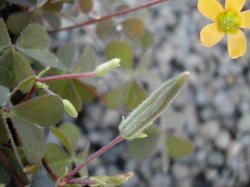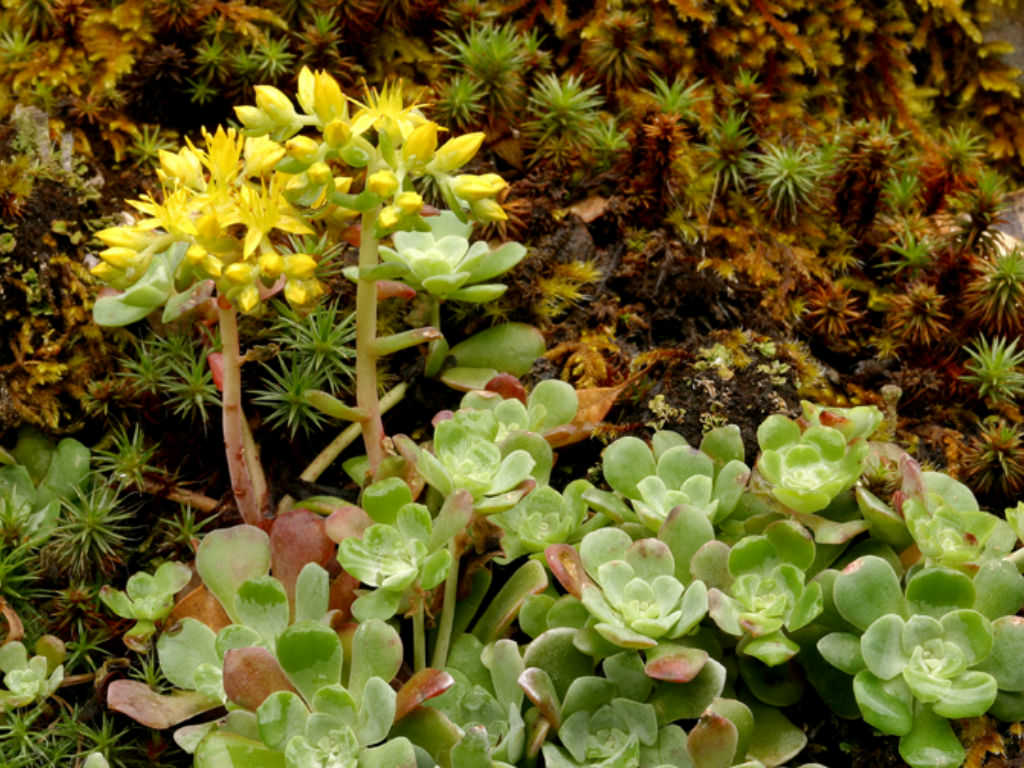Introduced species: Creeping woodsorrel (Oxalis corniculata)
Description: Creeping woodsorrel–also called “sleeping beauty” (by the poetic) or “procumbent yellow sorrel” (by someone misusing the word “procumbent;” see below)–is a member of the oxalis family (Oxalidaceae). Its three-lobed, clover-like leaves are typically less than an inch (2.5 cm) across, and alternate on a delicate, creeping stem that is infuriatingly good at breaking during attempts at removal, as well as sending new roots down at each node (putting the lie to “procumbent”). A common cultivar (O. corniuclata var. atropurpurea) has purple leaves, against which the plant’s small yellow flowers are quite striking. Like other oxalis leaves, these are edible, with a pleasant, lemony flavor. (Just don’t eat large quantities, as the oxalic acid present in the plant can inhibit calcium uptake in the body. Always be completely certain of identification before eating any plant.) Likely native to southeastern Asia, the plant has also been in Europe since at least the 15th century CE; it is quite common in the US as a garden weed.
Spread: In addition to the aforementioned ability to spread locally via its creeping stems, creeping woodsorrel produces many small seeds in capsules; when ripe, these explode on contact with any passing entity, sending seeds outward and/or embedding them in fur, socks, etc. for transport.
Control: The roots, while numerous, are generally fairly shallow (within the top 4-6″ of soil), so hand-pulling or digging is effective; try to do this before seed set, so your removal efforts don’t encourage progeny. As mentioned, things snap off readily on this plant, so be diligent in getting all the bits.

Native replacement: Redwood sorrel (Oxalis oregana) is a closely-related native plant, with delicate, showy white flowers; it makes a great ground cover for moist to dry shaded areas (and is also edible). O. corniculata often grows in sunny, tough sites; here, a better replacement would be broadleaf stonecrop (Sedum spathulifolium), which features evergreen, succulent foliage and a showy spray of yellow flowers in summer.

